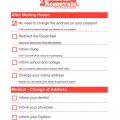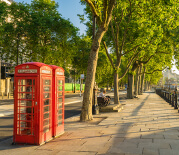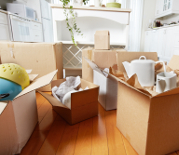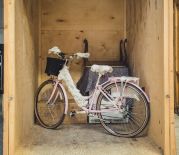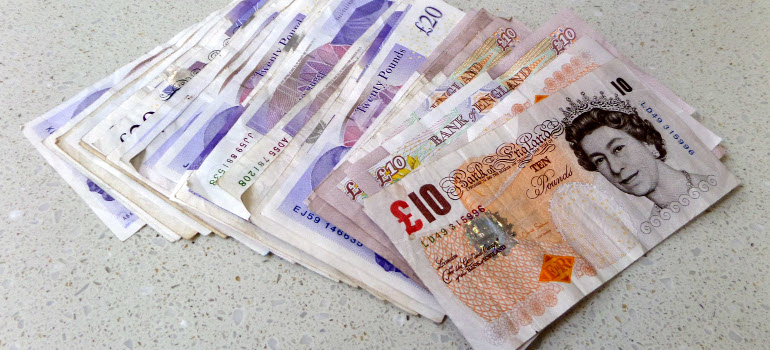
Living in Norway can be an enriching experience, but it also comes with a range of expenses that can be quite high compared to many other countries. In this blog post, we will take a closer look at the costs one can expect while living in this Scandinavian country.
From rent and groceries to transportation and leisure activities, we will break down the average cost of living in Norway to give you a better understanding of what it takes to survive in this beautiful land.
So, let’s dive in and discover the true Norwegian living costs!
Table of Contents
Can foreigners open a bank account in Norway?
Before registering as a resident, you can only open a savings account. There are several fees and quite a large amount of deposit required to do so.
If you’re registered already, you can open a standard bank account. You’ll need the following documents:
- Norwegian National Identity Number
- Passport
- A recent photo
- On rare occasions, a letter of recommendation from your English bank may be required
How much is the monthly rent in Norway
In Norway, the lowest rental price for a room in a shared accommodation can start at 339.55€, while larger houses with scenic views prices can exceed 3819.98€. Generally, apartments in urban areas and their surroundings are more costly and the national average rent is approximately 741.93€.
| Goods/Service | Prices |
|---|---|
| Apartment (1-bedroom) in City Centre | 1,111.09 € |
| Apartment (1 bedroom) Outside of Centre | 817.63 € |
| Apartment (3 bedrooms) in City Centre | 1,706.17 € |
| Apartment (3 bedrooms) Outside of Centre | 1,315.78 € |
Paying for preschool care in London is 366% more expensive at £1,328 per child per month than doing so in Oslo. You can also research which are the best places to live in Norway and what the situation with schools is there.
Cost of utility bills in Norway
| Goods/Service | Price |
|---|---|
| Basic (Electricity, Heating, Cooling, Water, Garbage) for 85m2 Apartment | 199.04 € |
| Mobile Phone Monthly Plan with Calls and 10GB+ Data | 35.40 € |
| Internet (60 Mbps or More, Unlimited Data, Cable/ADSL) | 50.36 € |
Transportation expenses
| Goods/Service | Prices |
|---|---|
| One-way Ticket (Local Transport) | 3.56 € |
| Monthly Pass (Regular Price) | 67.87 € |
| Taxi 1km (Normal Tariff) | 1.46 € |
| Gasoline (1 litre) | 1.83 € |
Cost of necessities
More often than not, when moving to another country, the capital is usually one of the first places to be considered as a viable option for relocation. However, a price comparison shows that in some cases, there are striking differences in monthly living expenses, with the most striking one being preschool costs.
Food costs in Norway
On average, the prices of food and beverages are between 20% and 45% lower in the UK.
| Goods/Service | Prices |
|---|---|
| Meal, Inexpensive Restaurant | 17.82 € |
| Water (0.33-litre bottle) | 2.42 € |
| Milk (1 litre) | 1.89 € |
| A loaf of Fresh White Bread (500g) | 2.86 € |
| Eggs (regular) (12) | 3.63 € |
| Banana (1kg) | 2.10 € |
| Lettuce (1 head) | 2.22 € |
Attire and personal care
Here are some additional but unavoidable expenses you’re likely to have:
| Goods/Service | Price |
|---|---|
| 1 Pair of jeans | 80.83 € |
| 1 Summer dress | 41.77 € |
| 1 Pair running shoes (Mid-Range) | 96.91 € |
| Fitness/monthly | 39.86 € |
Healthcare Cost in Norway
In Norway, public healthcare services are free for individuals aged 16 and under, as well as for pregnant and nursing women. For all other residents, there is an annual deductible, which averages around 146.09€. Once this deductible is met, individuals receive an exemption card that grants them free access to healthcare for the remainder of the year.
The private health insurance market in Norway is extremely limited, to the point of being nearly nonexistent. However, there are a few local insurance providers that offer monthly plans, with an average cost of about 36.38€
Takeaways
The cost of living in Norway is notably high, influenced by a variety of factors that contribute to the overall expense of daily life. One of the primary drivers is the elevated prices for goods and services, which can be attributed to the country’s strong economy, high wages, and robust social welfare system. This means that while residents enjoy a high standard of living, they also face higher costs for everyday items, from groceries to dining out.
Understanding these expenses is essential for anyone considering moving to Norway. It is important to budget accordingly and be prepared for the financial realities of living in a country known for its high quality of life but also for its steep price tags. Prospective residents and travellers should research and plan for these costs to ensure a smooth transition and an enjoyable experience in this beautiful Scandinavian country.
Moving abroad?
Let Fantastic Removals handle the international relocation for you!
For questions about the services we offer visit our main site or you can always call us at 020 3746 0584




